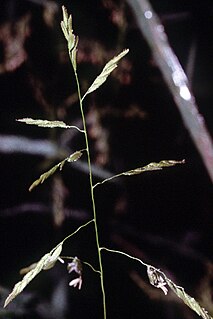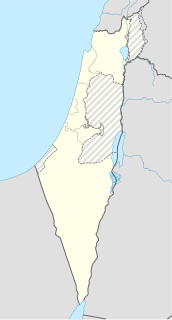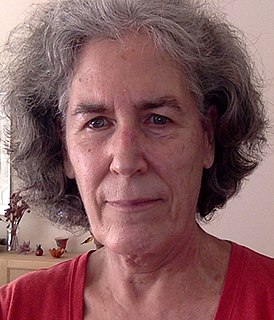External links
| | This biographical article about an American archaeologist is a stub. You can help Wikipedia by expanding it. |
Deborah M. Pearsall (born 1950) is an American archaeologist who specializes in paleoethnobotany. She maintains an online phytolith database. She is a full professor in the Department of Anthropology at the University of Missouri in Columbia, Missouri, where she first began working in 1978. She received her Ph.D. in anthropology from the University of Illinois at Urbana-Champaign in 1979, with a dissertation entitled The Application of Ethnobotanical Techniques to the Problem of Subsistence in the Ecuadorian Formative .
Pearsall was awarded the 2002 Fryxell Award for Exceptional Interdisciplinary Research by the Society for American Archaeology.

Maranta arundinacea, also known as arrowroot, maranta, West Indian arrowroot, obedience plant, Bermuda arrowroot, araru, araruta, ararao or hulankeeriya, is a large, perennial herb found in rainforest habitats. Arrowroot flour is now produced commercially mostly in St. Vincent and the Grenadines. Arrowroot was one of the earliest plants to be domesticated for food in northern South America, with evidence of exploitation or cultivation of the plant dating back to 8200 BC.

Pal(a)eoethnobotany or archaeobotany is a sub-field of environmental archaeology that studies plant remains from archaeological sites. Basing on the recovery and identification of plant remains and the ecological and cultural information available for modern plants, the major research themes are the use of wild plants, the origins of agriculture and domestication, and the co-evolution of human-plant interactions. Archaeobotany is arguably now a mature discipline, but one that is facing challenges relating to data and communication.

Phytoliths are rigid, microscopic structures made of silica, found in some plant tissues and persisting after the decay of the plant. These plants take up silica from the soil, whereupon it is deposited within different intracellular and extracellular structures of the plant. Phytoliths come in varying shapes and sizes. Although some use "phytolith" to refer to all mineral secretions by plants, it more commonly refers to siliceous plant remains. In contrast, mineralized calcium secretions in cacti are composed of calcium oxalates.

Ancient Maya cuisine was varied and extensive. Many different types of resources were consumed, including maritime, flora, and faunal material, and food was obtained or produced through strategies such as hunting, foraging, and large-scale agricultural production. Plant domestication concentrated upon several core foods, the most important of which was maize.

"Las Vegas culture" is the name given to many Archaic settlements which flourished between 8000 BCE and 4600 BCE.(10,000 to 6,600 BP) near the coast of present-day Ecuador. The name comes from the location of the most prominent settlement, Site No. 80, near the Las Vegas River and now within the city of Santa Elena. The Las Vegas culture represents "an early, sedentary adjustment to an ecologically complex coastal environment."
Gayle J. Fritz is an American paleoethnobotanist working out of Washington University in St. Louis. She is a world expert on ancient crops. Fritz runs the Paleoethnobotany Lab at Washington University in St. Louis under the auspices of the Anthropology Department.
Kristen Johnson Gremillion is an American anthropologist whose areas of specialization include paleoethnobotany, origins of agriculture, the prehistory of eastern North America, human paleoecology and paleodiet, and the evolutionary theory. Currently a professor in the Department of Anthropology at the Ohio State University and editor of the Journal of Ethnobiology, she has published many journal articles on these subjects.

Leersia oryzoides is a species of grass known by the common name rice cutgrass or just cut-grass. It is a widespread grass native to Europe, Asia, and North America and present in many other regions, such as Australia, as an introduced species. This is a rhizomatous perennial grass growing to a maximum height between 1 and 1.5 meters. The leaves are up to about 28 centimeters long and have very rough, minutely toothed edges. The inflorescence is a loose, open array of wavy, hairlike branches bearing rows of spikelets. Each spikelet is a flat fruit with a rough, bristly lemma without an awn, and no glumes. Some of the spikelet branches develop within the sheaths of the leaves and are cleistogamous. This grass is sometimes used for erosion control and restoring wetlands.
Monagrillo is an archaeological site in south-central Panama with ceramics that have been shown by radiocarbon dating to have an occupation range of about 2500 BC—1200 BC. The site is important because it provides the earliest example of ceramics in Central America along with one of the earliest examples of maize agriculture in the region. The site lies along Panama's most fruitful seacoast. and reached a maximum living area of 1.4 ha
Robert Norman Zeitlin is an American professor emeritus of anthropology at Brandeis University. He has a B.A. in psychology from Cornell University, a B.S. in aeronautical engineering from Boston University, an M.A. in anthropology from City University of New York, and a M.Phil. and Ph.D. in anthropology from Yale University.

Oña Canton is a canton of Ecuador, located in the Azuay Province. Its capital is the town of Oña, Ecuador. Its population at the 2001 census was 3,231.
Dolores Piperno is an American archaeologist specializing in archaeobotany. She is a senior scientist emeritus of the Smithsonian Tropical Research Institute in Balboa, Panama and the Smithsonian National Museum of Natural History, Washington.

Starch analysis or starch grain analysis is a technique that is useful in archaeological research in determining plant taxa on a microscopic level. It can also be used in day to day life by specialists within the pharmaceutical and food industries in order to determine taxa origins and food quality. Specifically in regards to archaeology though, the identification of starch grains, through this context is done by comparison identification, in which several attributes of the grains are compared to other known samples in order to determine the type. This comparison technique, when done microscopically allows for the specific taxa identification of starch grains found on specific artifacts, such as ground stone tools, within soils, through dental calculus, or found in reference to ceramic vessels. Starch grain analysis can be helpful as a supplement to other forms of study to understanding tool use, agricultural activities, as well as other plant based subsistence strategies, and to reconstruct plant based diets throughout time.

Hatula is an early Neolithic archeological site in the Judean hills south of Latrun, beside Nahal Nachshon, in Israel, 20 kilometres (12 mi) west of Jerusalem. The site is 15 metres (49 ft) above the riverbed on a rocky slope in an alluvial valley. Excavations revealed three levels of occupation in the Natufian, Khiamian and PPNA (Sultanian).
Robert M. Rosenswig is a Mesoamerican archaeologist born Oct. 30, 1968 in Montreal, Canada. He earned a B.A at McGill University in 1994, an M.A. at the University of British Columbia in 1998 and Ph.D. in 2005 from Yale University. Rosenswig currently conducts research projects Mexico, Belize, and Costa Rica. His research explores the emergence of sociopolitical complexity and the development of agriculture.
Christine Hastorf is an archaeologist and is currently Professor in the Anthropology department at the University of California, Berkeley. Her research focuses on agriculture, political complexity, gender, archaeobotany, and the archaeology of the Andes.

Naomi Miller is an archaeobotanist who works in western and central Asia. Miller is based at the University of Pennsylvania.
Wendy Beck is an Adjunct Associate Professor at the University of New England in archaeology and cultural heritage.
Lisa-Marie Shillito is a British archaeologist and senior lecturer in landscape archaeology as well as director of the Wolfson Archaeology Laboratory and Earthslides at Newcastle University. Her practical work focuses on using soil micromorphology, phytolith analysis and geochemistry in order to understand human behaviour and landscape change. Her work includes the Neolithic settlements of Çatalhöyük in Turkey and Ness of Brodgar and Durrington Walls in Britain, but also Crusader castles and medieval settlements in Poland and the Baltic and in the Near East.
Alison Weisskopf (1960–2018) was a British archaeologist specialising in archaeobotany, specifically the analysis of ancient phytoliths.